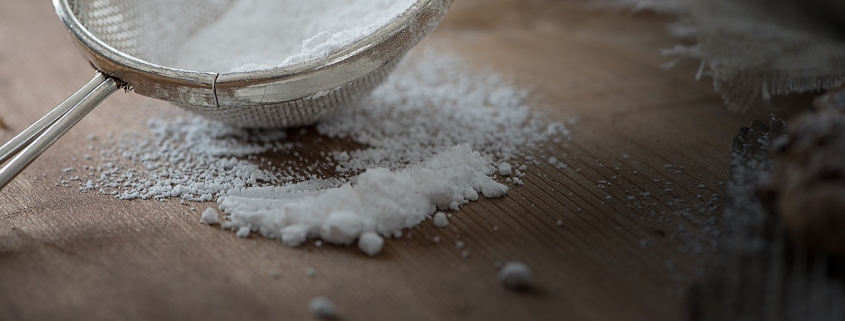Substitutions in AIP Cooking & Baking
Substitutions in AIP Cooking & Baking Can Be Tricky …
Caution is Required!
Can I substitute this for that, or that for this? This is probably one of the most frequently asked questions I get from folks that either can’t find ingredients or have allergies or sensitivities.
In traditional cooking and baking substitutions can be pretty straightforward and usually a minor tweak here and there to a recipe won’t cause a problem … HOWEVER, this is the AIP and many of the ingredients (especially in baking) simply do not react the same way.
Not only are some of the ingredients you’ll run into unfamiliar and difficult to access, they can also be a bit more expensive. That said, I don’t want you risking your precious supplies when there are better options.
So, what should you do?
If you’re looking to substitute an ingredient in an AIP recipe (e.g. tapioca – arrowroot, plantains – green bananas, cassava flour – tigernut flour, palm shortening, coconut oil, coconut butter, coconut milk, coconut cream… etc… etc…….) I recommend trying to do a little digging in the recipe itself. To me the authority on each recipe is the recipe creator. Folks creating AIP recipes do a LOT of trial and error before they settle on their final masterpiece and present it to the world. That said, who better to tell us if a substitution can be made. They want you to recreate their dish with success and experience the same taste and texture that they did – they’re proud of their work and don’t want folks leaving bad reviews about it based on some random substitution gone wrong.
Suggestions:
- Try looking at the entire recipe post. Many food bloggers prelude the recipe with a lengthy article about how they came up with the recipe and why they choose the ingredients they did. This will OFTEN give you a clue as to whether substitutions are a good idea.
- Read comments that other people have left on the recipe at the bottom of the blog post. OFTEN you will find the answers you seek are there. Sometimes there are a LOT of comments on a recipe, so you can try using the computer search function inside the recipe (ctrl-F brings up the search box) this will help expedite your search. Simply try entering the ingredient you wish to use .. it might take you directly to the answer you need.
- Quantity is another factor to consider. If the substitution you’re considering involves the main ingredient or a relatively main ingredient of substantial quantity, I typically recommend searching for an alternate instead of considering substitutions. Find a similar recipe that contains ingredients you can use or access. It may take a little digging, but from experience I’ve found that you’re likely NOT the only one that’s required a substitution and someone’s usually filled the void with a new recipe creation that’s been tried and tested. Try using the search feature in our Facebook Group where there are literally thousands of recipes posted.
- If it’s a matter of not being able to find certain ingredients in your area I would recommend you check out our Food Sourcing page for links to products and online stores that carry AIP items. Barring that you can try Amazon, they are a great resource for unusual items.
- It seems that many starting out are sensitive to coconut products, and I get asked a lot about a blanket substitution for coconut milk and coconut aminos since these are quite commonly used in AIP recipes. First let me start by saying that in AIP baking there is no standard substitute for coconut milk – you will need to assess the suitability on a recipe by recipe basis. If you’re simply looking for an alternate AIP milk, you can try making your own tigernut milk, avocado milk or banana milk (recipes for all of these can be found in the Facebook Group) – but remember – you have to assess the recipe – the properties of each of these AIP milks are different and they will not react or produce the same results as coconut milk. AIP cooking is a little more forgiving, and you can find a couple of recipes to make your own coconut aminos replacement in the Facebook Group. Also, once you’re in the group, you’ll see that I tag a lot of recipes #coconutfree – this will make your life easier and help you find recipes that you don’t need to worry about substitutions.
- Once you’ve exhausted all the options above, you could try posting a question on the original recipe – that way the creator of the recipe can advise you directly, or post a question on the recipe you’re having trouble with in our Facebook group.
A Final Note:
Substitutions in AIP BAKING are far more risky than AIP COOKING, so be aware that you may be risking your ingredients to recipe failure if you do decide to make substitutions (especially substitutions of vital binding and starch ingredients). Looking to learn more about things like cassava flour, tapioca and arrowroot starch? Some folks think you can interchange these items, but that’s not always the case – read my dedicated post about that here – Arrowroot vs. Tapioca vs. Cassava.
I personally chatted with Mickey Trescott of Autoimmune Wellness about this subject during a Live Q&A that we did in our Facebook Group – you can watch the Q&A session here if you wish, but the gist of it is this – Recipe creators do their very best to create AIP recipes that are going to taste like the “real deal” – not some strange AIP/Gluten Free knock off – TRUST their EXPERTISE!!
More from Mickey Trescott on Substitutions:
This is taken from Mickey’s Instagram feed – follow Mickey here – she’s awesome!
AIP BAKING SUBSTITUTIONS // Have you left a comment on my baking recipes saying “I can’t tolerate X do you have any recommendations?” or “Will this recipe work with X instead of Z?” You may have been disappointed in my answer (usually something along the lines of a simple “no, sorry”). Nothing makes a recipe developer more frustrated to hear feedback that a recipe didn’t work only to hear that substitutions were made or they didn’t follow the directions.
Today, I’m going to explain…
1. When I develop an AIP treat recipe my #1 goal is to come up with something that is palatable enough to serve to your non-AIP friends and family. I test my recipes carefully to make sure they TASTE GOOD. I choose ingredients based on how they perform – I’m looking for the right texture and ease of repeatable success in YOUR kitchen.
2. Specialty ingredients are EXPENSIVE and FUSSY. I don’t want you to waste time and money on bad results. There are no perfect 1 to 1 swaps of these baking ingredients – each one is unique, and I do not spend time discovering what type of disaster you are going to end up with if you use coconut instead of arrowroot (I can tell you right now though, it isn’t going to work).
3. I understand that certain AIP baking ingredients (hello cassava and coconut) are not tolerable to a lot of folks in our community. My recommendation is NOT to try and adapt AIP recipes to fit your additional restrictions – look for recipes that are specifically written without those things. You’ll find cassava-free, coconut-free, and added sweetener-free dessert recipes in all of my books and in the @autoimmunepaleo blog archives. Go find them!
While I don’t advise eating them on a regular basis, a yummy AIP treat recipe can be a fun indulgence or a way to celebrate with friends or family. Do yourself a favor and set yourself up for success by selecting a recipe that calls for ingredients you tolerate and using tools you have on hand.







